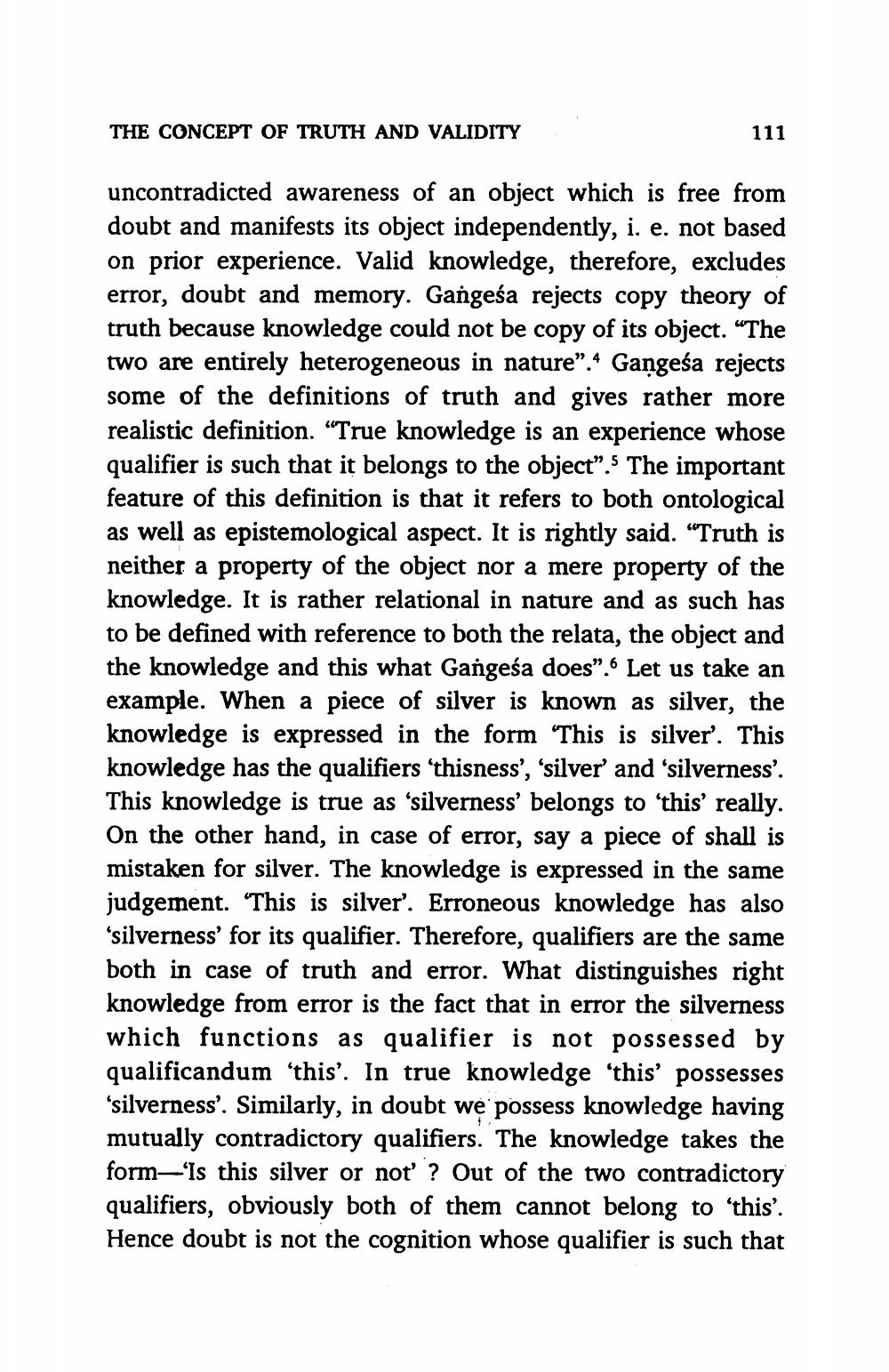________________
THE CONCEPT OF TRUTH AND VALIDITY
111
uncontradicted awareness of an object which is free from doubt and manifests its object independently, i. e. not based on prior experience. Valid knowledge, therefore, excludes error, doubt and memory. Gangeśa rejects copy theory of truth because knowledge could not be copy of its object. “The two are entirely heterogeneous in nature". Gangeśa rejects some of the definitions of truth and gives rather more realistic definition. "True knowledge is an experience whose qualifier is such that it belongs to the object”. The important feature of this definition is that it refers to both ontological as well as epistemological aspect. It is rightly said. “Truth is neither a property of the object nor a mere property of the knowledge. It is rather relational in nature and as such has to be defined with reference to both the relata, the object and the knowledge and this what Gangeśa does”. Let us take an example. When a piece of silver is known as silver, the knowledge is expressed in the form 'This is silver'. This knowledge has the qualifiers 'thisness', 'silver' and 'silverness'. This knowledge is true as 'silverness' belongs to this' really. On the other hand, in case of error, say a piece of shall is mistaken for silver. The knowledge is expressed in the same judgement. This is silver'. Erroneous knowledge has also 'silverness' for its qualifier. Therefore, qualifiers are the same both in case of truth and error. What distinguishes right knowledge from error is the fact that in error the silverness which functions as qualifier is not possessed by qualificandum 'this'. In true knowledge 'this' possesses 'silverness'. Similarly, in doubt we possess knowledge having mutually contradictory qualifiers. The knowledge takes the form-'Is this silver or not? Out of the two contradictory qualifiers, obviously both of them cannot belong to this?. Hence doubt is not the cognition whose qualifier is such that




